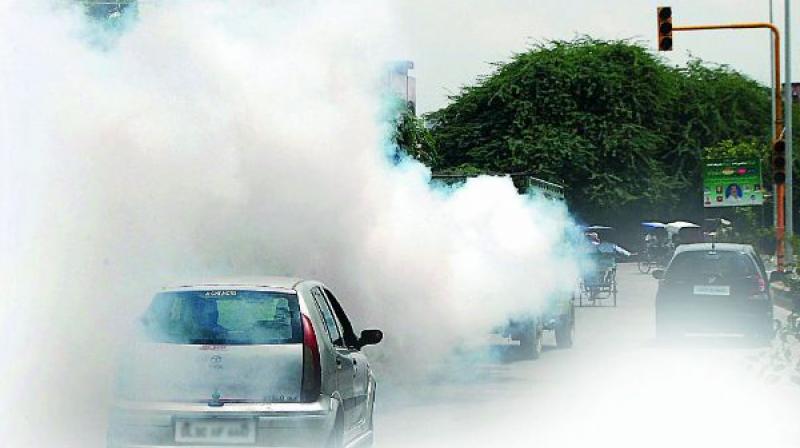Hyderabad worst in South when it comes to air pollution
Hyderabad had the highest number of red days as opposed to western and southern cities.

Hyderabad: Hyderabad has the worst air quality as far as pollution by Particulate Matter 2.5 (PM 2.5) is concerned among cities in south and west India.
According to data posted by the Central Pollution Control Board, from September 2016, Hyderabad had the highest number of red days as opposed to western and southern cities.
The red days have greater levels of PM2.5 in the air which is harmful for all ages.
PM2.5 refers to particles that are less than 2.5 micrometres in diameter, and is said to be the most dangerous of air-borne pollutants as they are able to enter the lungs. Although PM 2.5 levels in Hyderabad are alarming, officials of the Pollution Control Board (PCB) say that the annual average is being maintained.
Mr P. Veerana, a scientist from the Pollution Control Board, says, “Since it is nearly winter, and monsoon is coming to an end, there is no dispersion of the particulate matter, especially at lower levels. A lot of factors such as low wind speed result in an increase in particulate matter.”
The PCB has 19 manual air quality stations which measures pollution. A PCB official said Hyderabad has the advantage of being landlocked. Coastal areas such as Vizag suffer from higher levels of pollution because of the circulation of winds that cause the dispersion of the pollutants and the humidity that makes particles heavier.
Sholapur, which is also landlocked, has much lower PM 2.5 levels as compared to Hyderabad.
Dr Babu Rao, the former chief scientist of the Indian Institute of Chemical Technology, said, “Telangana should try to keep its pollution levels in check. Controlling the number of vehicles and ensuring that heavy vehicles do not enter highly-polluted areas is a must.
Air quality once lost cannot be restored: Expert
Dr Babu Rao, the former chief scientist of the Indian Institute of Chemical Technology, said, “Air quality once lost cannot be restored within a short period of time. PM 2.5 are harmful to everyone, not just to people who are susceptible to breathing problems.” The decrease in green spaces and the increase in the use of concrete also have a role to play in the deterioration of air quality, according to experts.
Environmentalist Dr Subba Rao said, “Open spaces are covered in concrete, and we are now gripped by air pollution. Plants act as buffer zones; they help reduce the spread of gaseous pollutants. Dust can also settle on their leaves.”
He says that the development of industries in every nook and corner of the city is only going to lead to a further increase in the particulate matter. Officials of the PCB say that the solution to this problem is to increase awareness among the public.
“We have encouraged citizens to use public transport to reduce congestion on the roads. There has been no drastic increase in the annual average pollution levels, however, there is a long way to go in the improvement of air quality,” says an official.

